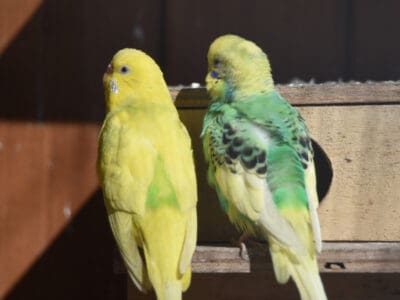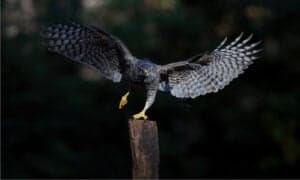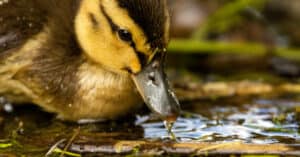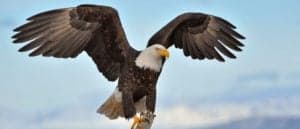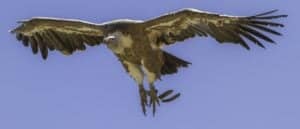What Do House Finches Eat?
@media (min-width: 481px) {
.mobile-top-content {
display: none;
}
}
#mobileTopContentCTACarouselControls { overflow: hidden; text-overflow: ellipsis; white-space: nowrap; }
.mobile-top-content .more { color: #fff; }
.mobile-top-content a { color: #fff; text-decoration: underline; }
.mobile-top-content a:hover { color: #fff; text-decoration: underline; }
@media (max-width: 480px) {
.mobile-top-content {
background-color: #06a10b;
color: #fff;
text-align: center;
/*height: 60px;
padding-top:5px;*/
font-size:80%;
/* display: block; */
margin: 0px -30px;
}
}
House finches are incredibly adorable birds that can be found all across the United States. In fact, they are now among the most abundant and common birds in the United States. You’ve probably seen these adorable birds hanging out in backyards and gracing bird feeders with their colorful appearance. However, they haven’t always been found all across the country.
They used to be limited to the arid regions of Mexico and the southwestern United States, including deserts, grassland, chaparral, and other open areas. House finches are classified as birds in the Aves class, and they are members of the Fringillidae family. It is believed that there are between 267 million and 1.7 billion House Finches found all throughout North America. However, this is just an estimate as their population may actually be far larger.
Curious to find out more about these beautiful birds? In this article, We’ll explore what house finches eat and who many of their natural predators are in the wild.
button.pulse {
transform: scale(1); animation: pulse 2s infinite;
box-shadow: 0 0 0 0 rgba(11, 247, 25, 1);
}
@keyframes pulse {
0% { transform: scale(0.90); box-shadow: 0 0 0 0 rgba(11, 247, 25, 0.5); }
60% { transform: scale(1); box-shadow: 0 0 0 15px rgba(11, 247, 25, 0); }
100% { transform: scale(0.90); box-shadow: 0 0 0 0 rgba(11, 247, 25, 0); }
}
What Do House Finches Eat?
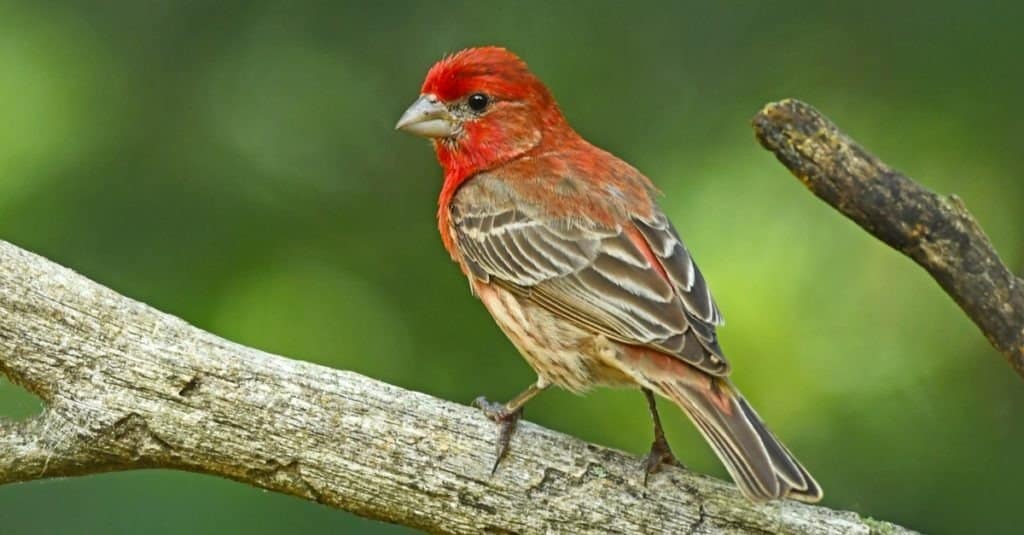
Brian A Wolf/Shutterstock.com
House finches eat a diet that consists of seeds, fruits, and other foods. They are predominately herbivores. They have, however, been observed to feed on insects such as aphids on rare occasions. Though they mostly sustain themselves on an entirely herbivorous diet.
A complete list of a house finches’ diet includes:
- Seeds, such as dandelion seeds, sunflower seeds, nettle seeds, black oil sunflower seeds, millet, and wild mustard seeds
- Fruits, such as berries, figs, apricots, cherries, peaches, pears, and plums
- Plants, such as flower buds, knotweed, thistle, mulberry, poison oak, cactus, and many other plant species
They will attend to bird feeders all year, especially if they are loaded with sunflower or nyjer seed. They will also cluster around hanging nyjer sock feeders. House finches, unlike other Carpodacus finches, do actually forage on the ground. However, they prefer high perches nearby and/or dining in huge groups while feeding in open settings.
Studies have also been made observing the relationship between house finches’ diet and the brightness of their feathers. In this study, a substantial positive relationship between the development rate of a male’s tail feathers and the brightness of his plumage was made.
This suggests that males with brighter feathers are actually in better nutritional condition. So the next time you see a brightly colored house finch, you can bet that they have been eating well.
What Do House Finches Eat In The Winter?
Many birds acquire weight in the form of fat layers to prepare for the hardships of winter. They do this by increasing their eating patterns and consuming fat-rich foods. However, house finches actually don’t do this. They are able to increase their metabolic rates to produce more heat at times when it’s called for.
This is why Finches are still granivorous in the winter. They consume seeds as well as insects. These birds eat nyjer, black oil sunflower, and hulled sunflower seeds. During this season, most finch species visit a variety of seed-bearing flowers.
Despite the fact that insects are scarce in the winter, finches consume both live and dried mealworms given by many backyard birders. These birds eat fruits and berries in the wild as well as at-home feeders. They’ve even been spotted on meat feeders.
Now that we have a better understanding of what house finches eat, let’s dive into what eats them. Since they are relatively small birds, they must watch out for a number of predators.
What Eats House Finches in the Wild?
Domestic cats, Cooper’s hawks, and sharp-shinned hawks are the most common predators of adult house finches. However, there are also many predators that will attempt to hijack eggs from a house finch nest. These include blue jays, common grackles, common crows, eastern chipmunks, fox squirrels, rats, skunks, snakes, raccoons, and house cats.
House finches escape predators mostly by keeping an eye out for them. This is why they like to forage in groups because each member helps to keep an eye out for predators.
How Does Their Diet Impact the Ecosystem

Real Window Creative/Shutterstock.com
As we know, every animal on the planet contributes to the ecosystem in its own unique way. House finches in particular are responsible for quite a bit. They play a crucial role in seed predation and dispersal. Although it may not be fun to think about, considering just how cute they are, they do act as an important food source as well. House finches also supply food for birds of prey, snakes, and other predators.
What To Feed House Finches As a Pet
Finches, like other birds, require a well-balanced diet to live long and healthy lives. As different plants come into season, wild finches eat a range of seed kinds. Commercial seed mixtures may contain two to five different types of seeds.
These seeds, however, are heavy in fat and low in nutrients and are not the same as those eaten by wild finches. If these seed mixtures are fed as the sole source of food, it may result in poor health and a potentially shorter lifetime for your pet finch.
Pellets are the best diet for the majority of birds. Seed-eating birds should be gradually transitioned from seed-based diets to pelleted diets. Pellets should ideally make up at least 70% of the bird’s diet.
Fruits, vegetables, and greens should account for around 20% of their daily diet. Pale vegetables with a high water content, such as iceberg lettuce or celery, have relatively little nutritious value. Avoid feeding your finch any of these pale veggies. Avocado has been found to be harmful and should never be offered to a bird.
However, don’t get too upset or stressed if your bird isn’t open to all foods that are technically good for it. If a bird refuses food one day, it may be interested in eating it the next day. Continue to try to get them interested in the food without forcing them.
More from A-Z Animals
.more-snake-card-image { max-height:140px !important; }
@media (min-width: 481px) {
.mobile-top-content {
display: none;
}
}
#mobileTopContentCTACarouselControls { overflow: hidden; text-overflow: ellipsis; white-space: nowrap; }
.mobile-top-content .more { color: #fff; }
.mobile-top-content a { color: #fff; text-decoration: underline; }
.mobile-top-content a:hover { color: #fff; text-decoration: underline; }
@media (max-width: 480px) {
.mobile-top-content {
background-color: #06a10b;
color: #fff;
text-align: center;
/*height: 60px;
padding-top:5px;*/
font-size:80%;
/* display: block; */
margin: 0px -30px;
}
}
House finches are incredibly adorable birds that can be found all across the United States. In fact, they are now among the most abundant and common birds in the United States. You’ve probably seen these adorable birds hanging out in backyards and gracing bird feeders with their colorful appearance. However, they haven’t always been found all across the country.
They used to be limited to the arid regions of Mexico and the southwestern United States, including deserts, grassland, chaparral, and other open areas. House finches are classified as birds in the Aves class, and they are members of the Fringillidae family. It is believed that there are between 267 million and 1.7 billion House Finches found all throughout North America. However, this is just an estimate as their population may actually be far larger.
Curious to find out more about these beautiful birds? In this article, We’ll explore what house finches eat and who many of their natural predators are in the wild.
button.pulse {
transform: scale(1); animation: pulse 2s infinite;
box-shadow: 0 0 0 0 rgba(11, 247, 25, 1);
}
@keyframes pulse {
0% { transform: scale(0.90); box-shadow: 0 0 0 0 rgba(11, 247, 25, 0.5); }
60% { transform: scale(1); box-shadow: 0 0 0 15px rgba(11, 247, 25, 0); }
100% { transform: scale(0.90); box-shadow: 0 0 0 0 rgba(11, 247, 25, 0); }
}
What Do House Finches Eat?

Brian A Wolf/Shutterstock.com
House finches eat a diet that consists of seeds, fruits, and other foods. They are predominately herbivores. They have, however, been observed to feed on insects such as aphids on rare occasions. Though they mostly sustain themselves on an entirely herbivorous diet.
A complete list of a house finches’ diet includes:
- Seeds, such as dandelion seeds, sunflower seeds, nettle seeds, black oil sunflower seeds, millet, and wild mustard seeds
- Fruits, such as berries, figs, apricots, cherries, peaches, pears, and plums
- Plants, such as flower buds, knotweed, thistle, mulberry, poison oak, cactus, and many other plant species
They will attend to bird feeders all year, especially if they are loaded with sunflower or nyjer seed. They will also cluster around hanging nyjer sock feeders. House finches, unlike other Carpodacus finches, do actually forage on the ground. However, they prefer high perches nearby and/or dining in huge groups while feeding in open settings.
Studies have also been made observing the relationship between house finches’ diet and the brightness of their feathers. In this study, a substantial positive relationship between the development rate of a male’s tail feathers and the brightness of his plumage was made.
This suggests that males with brighter feathers are actually in better nutritional condition. So the next time you see a brightly colored house finch, you can bet that they have been eating well.
What Do House Finches Eat In The Winter?
Many birds acquire weight in the form of fat layers to prepare for the hardships of winter. They do this by increasing their eating patterns and consuming fat-rich foods. However, house finches actually don’t do this. They are able to increase their metabolic rates to produce more heat at times when it’s called for.
This is why Finches are still granivorous in the winter. They consume seeds as well as insects. These birds eat nyjer, black oil sunflower, and hulled sunflower seeds. During this season, most finch species visit a variety of seed-bearing flowers.
Despite the fact that insects are scarce in the winter, finches consume both live and dried mealworms given by many backyard birders. These birds eat fruits and berries in the wild as well as at-home feeders. They’ve even been spotted on meat feeders.
Now that we have a better understanding of what house finches eat, let’s dive into what eats them. Since they are relatively small birds, they must watch out for a number of predators.
What Eats House Finches in the Wild?
Domestic cats, Cooper’s hawks, and sharp-shinned hawks are the most common predators of adult house finches. However, there are also many predators that will attempt to hijack eggs from a house finch nest. These include blue jays, common grackles, common crows, eastern chipmunks, fox squirrels, rats, skunks, snakes, raccoons, and house cats.
House finches escape predators mostly by keeping an eye out for them. This is why they like to forage in groups because each member helps to keep an eye out for predators.
How Does Their Diet Impact the Ecosystem

Real Window Creative/Shutterstock.com
As we know, every animal on the planet contributes to the ecosystem in its own unique way. House finches in particular are responsible for quite a bit. They play a crucial role in seed predation and dispersal. Although it may not be fun to think about, considering just how cute they are, they do act as an important food source as well. House finches also supply food for birds of prey, snakes, and other predators.
What To Feed House Finches As a Pet
Finches, like other birds, require a well-balanced diet to live long and healthy lives. As different plants come into season, wild finches eat a range of seed kinds. Commercial seed mixtures may contain two to five different types of seeds.
These seeds, however, are heavy in fat and low in nutrients and are not the same as those eaten by wild finches. If these seed mixtures are fed as the sole source of food, it may result in poor health and a potentially shorter lifetime for your pet finch.
Pellets are the best diet for the majority of birds. Seed-eating birds should be gradually transitioned from seed-based diets to pelleted diets. Pellets should ideally make up at least 70% of the bird’s diet.
Fruits, vegetables, and greens should account for around 20% of their daily diet. Pale vegetables with a high water content, such as iceberg lettuce or celery, have relatively little nutritious value. Avoid feeding your finch any of these pale veggies. Avocado has been found to be harmful and should never be offered to a bird.
However, don’t get too upset or stressed if your bird isn’t open to all foods that are technically good for it. If a bird refuses food one day, it may be interested in eating it the next day. Continue to try to get them interested in the food without forcing them.

